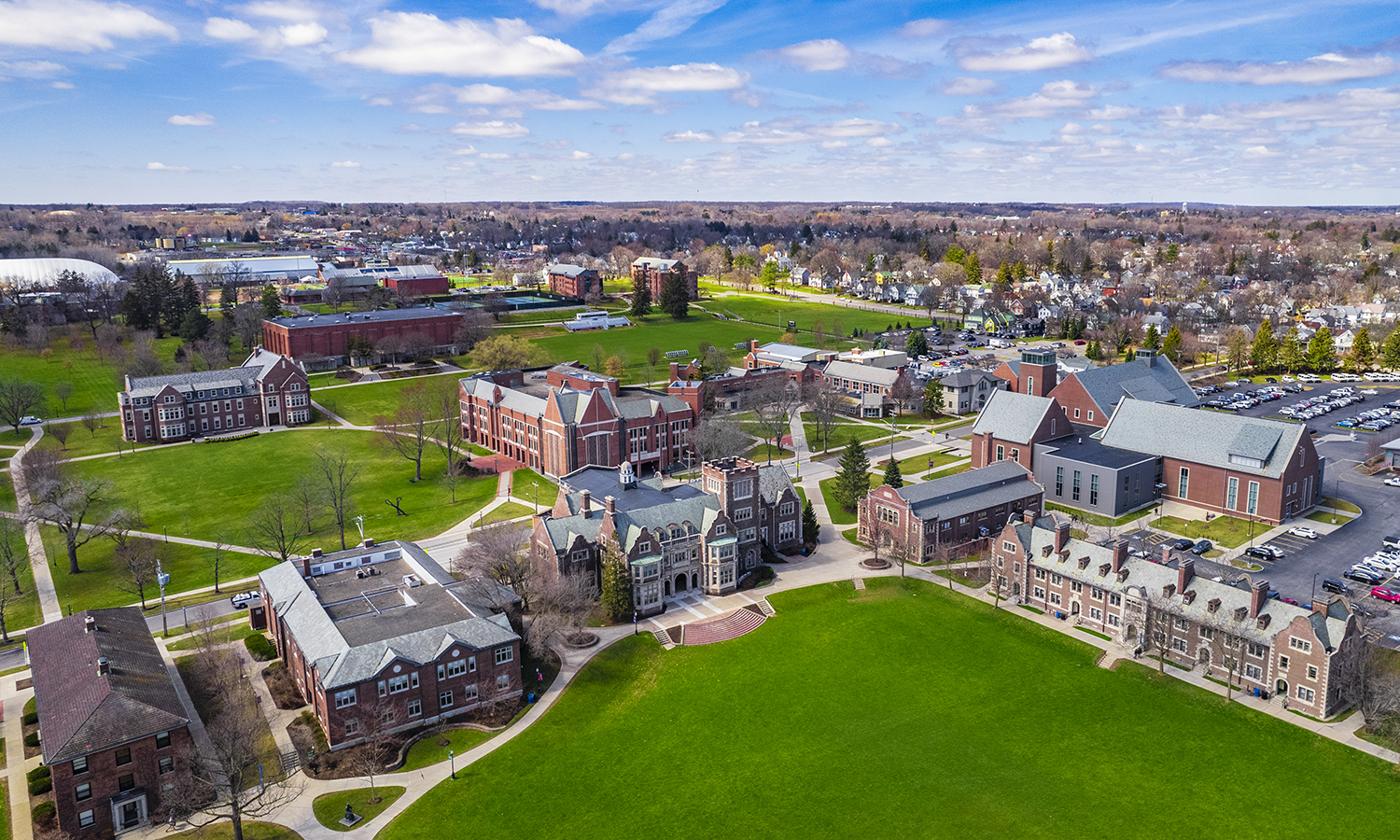
HWS News
30 November 2016 • Research Advancing Social Norms Research
For more than two decades, Professor of Chemistry David Craig and Professor of Sociology Wesley Perkins have pioneered a social norms intervention model that effectively dispels harmful misperceptions about conduct like alcohol abuse, while promoting positive behaviors.
Through their Alcohol Education Project, Craig and Perkins – who have published extensively on the subject – are collaborating with the United States Air Force to apply the model at military bases across the country and around the world. The results from data collected in their 2012-2014 intervention project at Air Force bases shows that using a social norms intervention model had a positive impact and was able to successfully reduce alcohol abuse and associated consequences.

“There's a tremendous amount of research that demonstrates people are underestimating moderate behavior, but will overestimate bad or risky behaviors,” Perkins says. “It's not the majority of a group that has a problem, but when asked, most people tend to think that almost everyone else is engaging in the negative behavior.”
For the study, which was funded by the Air Force through a sub-grant from Kansas State University, eight Air Force bases were selected, representing a variety of sizes and locations in the U.S. and abroad. Data were collected from young Airmen (men and women) ages 18-24 at each base through an anonymous online survey designed by Perkins and Craig to identify the real social norms surrounding alcohol use and establish a baseline at each site.
“We uncovered the anticipated pattern finding that the Airmen thought far more of their peers were more indiscriminate with their behaviors than was the actual case,” Perkins says.
As part of the intervention model, Airmen were educated about actual social norms regarding alcohol use through personalized feedback provided in repeated follow up surveys and an extensive localized media campaign about actual norms at their respective bases.
“By giving them media and personalized normative feedback about real norms there was a substantial impact in terms of reducing negative behaviors,” Craig says.
Follow up survey data showed that Airmen who had been exposed to the intervention for two months or longer had benefitted. They held more accurate perceptions of peer drinking norms, used more protective drinking strategies, were less likely to have estimated blood alcohol concentrations at high levels when drinking at parties and bars, and reported fewer negative consequences from drinking.
Monthly incident reports at five bases that initially received the social norms intervention showed a 21 percent overall reduction of alcohol-related misconduct. The three control bases, which did not receive the intervention training or intervention media until after the assessment period, had a 47 percent increase in alcohol-related misconduct during that same time period.
Perkins and Craig, who were principal investigators of the 2012-2014 study, have more recently been involved in a second phase of the research which is being led by researchers at Pennsylvania State University delivering the program to more than 15 additional military bases. In the second phase of the study, researchers are exploring more factors, including whether taking the survey as a group or through email at a respondent's convenience has an effect on the outcome of the intervention. They are also exploring the impact of feedback of local social norms versus providing respondents with more generic Air Force wide norms information.
“When new people arrive in a particular group, they bring with them particular misperceptions,” Craig says. “If you want the program to work, you have to keep it going. You can't drop it. It's not a one-shot magic bullet.”
Over the years, the social norms intervention model developed by the Alcohol Education Project has been applied in a variety of settings and across various social circumstances.
Perkins and Craig launched the project among student-athletes at HWS, eventually expanding the intervention program to other NCAA Division III programs. Students have also been involved with the research, administering breathalyzing and collecting data to better understand actual norms regarding alcohol consumption.
Perkins and Craig also extended their work to understand social norms around drinking and driving in non-college communities. The model has also been used in high schools.
The misperception of social norms isn't a phenomenon isolated to alcohol consumption, Perkins and Craig say. For example, they've introduced social norms interventions for bullying in middle schools. Similarly, it's been used regarding misperceived peer weight norms and poor self-image.
For more information about the Alcohol Education Project and the social norms approach, visit: www.alcoholeducationproject.org or www.youthhealthsafety.org/.
